QR Codes - Everything you always wanted to know*
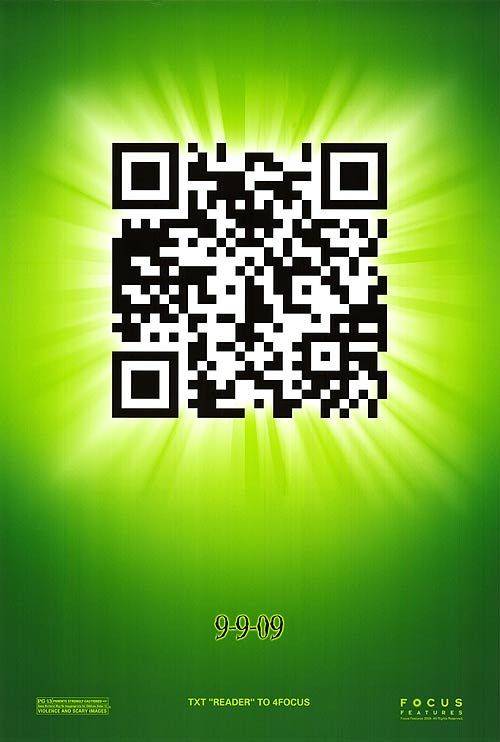 In 2002, a group of Japanese network carriers, handset makers and service providers began collaborating to create innovative uses for the new cameras in mobile phones. Their favorite idea was to turn a camera phone into a scanner to deliver encoded information, including URLs, directly to the mobile Internet. As a result of that collaboration, QR Codes are now recognized by over 90% of Japanese cell phone users – and used by more than half of them – for fast and easy access to the vast amount of information around them. More people in Japan now surf the web from a mobile phone than from a PC. And QR Codes are found everywhere – in advertising and promotional materials, on product packaging and vending machines.
In 2002, a group of Japanese network carriers, handset makers and service providers began collaborating to create innovative uses for the new cameras in mobile phones. Their favorite idea was to turn a camera phone into a scanner to deliver encoded information, including URLs, directly to the mobile Internet. As a result of that collaboration, QR Codes are now recognized by over 90% of Japanese cell phone users – and used by more than half of them – for fast and easy access to the vast amount of information around them. More people in Japan now surf the web from a mobile phone than from a PC. And QR Codes are found everywhere – in advertising and promotional materials, on product packaging and vending machines.
Today an increasing number of mobile phones outside of Japan are also installed with QR Code readers, but if not, free reader software is readily available for most mobile platforms. And, in recent years these distinctive square patterns have navigated the globe.
Today, scanning a QR Code on a movie poster anywhere in the world might link directly to a preview of the film on the mobile phone. The movie poster at the right is a creative example of an advertisement for the 2009 animated movie “9.” (the link is no longer active.)
There is no apparent technical reason that another 2D symbology could not perform these applications as well as the QR Code. But the B2C marketing that placed QR Code symbols in the mainstream has been nothing short of brilliant.
For readers not familiar with how the technology works, the following is a brief tutorial.
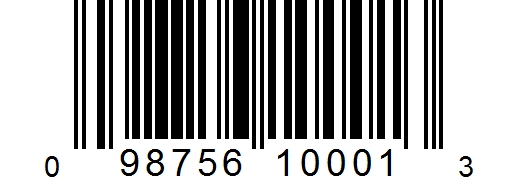
Linear bar codes encode information in one dimension, horizontally, through various combinations of dark bars and light spaces and typically encode around 20 characters of data. The Universal Product Code (U.P.C.) symbols scanned at the checkout are the most familiar of the linear symbologies. Unknown to the general public, UPC symbols contain only 12 numeric digits to identify the product. Many would be surprised to know that the price is not actually encoded in the symbol, but contained in a data base that might not even be located in the same building.
Two-dimensional (2D) symbols, on the other hand, encode information both horizontally and vertically, encoding the data more efficiently and in less space than a linear symbol. There are two versions of 2D symbols:
 The PDF417 symbol at the left is a stacked or multi-row 2D symbol. ("PDF" stands for Portable Data File. "417" comes from the method of encoding a symbol character. Each character consists of 4 bars and 4 spaces and is 17 modules wide. These symbols are composed of bar codes stacked on top of one another. LIke their linear symbol relatives, stacked or multi-row symbols encode data using combinations of bars and spaces. PDF417 symbols encode personal information on the back of driver's licenses in 45 states of the US.
The PDF417 symbol at the left is a stacked or multi-row 2D symbol. ("PDF" stands for Portable Data File. "417" comes from the method of encoding a symbol character. Each character consists of 4 bars and 4 spaces and is 17 modules wide. These symbols are composed of bar codes stacked on top of one another. LIke their linear symbol relatives, stacked or multi-row symbols encode data using combinations of bars and spaces. PDF417 symbols encode personal information on the back of driver's licenses in 45 states of the US.
The preceding paragraph is encoded in the PDF417 symbol above. It could have been scaled much smaller, but that makes it difficult to identify the individual rows of linear symbols.

QR (Quick Response) Code is a Matrix 2D symbology, encoding data based on the positioning of dark elements on a light background. Decoding the QR Code symbol at the left will provide you with information about the author.
QR Code was created in 1994 for the purpose of allowing the contents of the symbol to be decode at high speeds. Today QR Code is a registered trademark of Denso Wave and an ISO standard (ISO/IEC 18004) with a free license to use.
QR Code is capable of encoding more than 7,000 characters in a single symbol, whereas a single bar code symbol typically stores around 20 digits. A QR Code symbol encoding the same 20 digits woudl be one-tenth the size of the bar code.
QR Code is easily recognized because of the distinctive square "position detection patterns" at three corners of the symbol, allowing the symbol to be easily found and decoded by a QR Code reader in any orientation and at high speeds.
There is also a version, Micro QR Code, that saves space by using only one position detection pattern. 
MicroQR code can store only a maximum of 35 numeric characters, but it was designed for applications with only a small amount of marking space available, such as on printed circuit boards and electronic parts.
Very recently, another version, dubbed iQR Code, was developed for the industrial market. It has an even higher data capacity in a smaller space and can be created ina rectangular format. To dta, readers for the new version are available only in Japan, so it will likely be a while before a rectangular iQR Code will be seen outside of Japan.
It's unlikely that the B2B applications for iQR or Micro QR Code will ever be as creative as the B2C applications for the basic QR Code symbol have become.
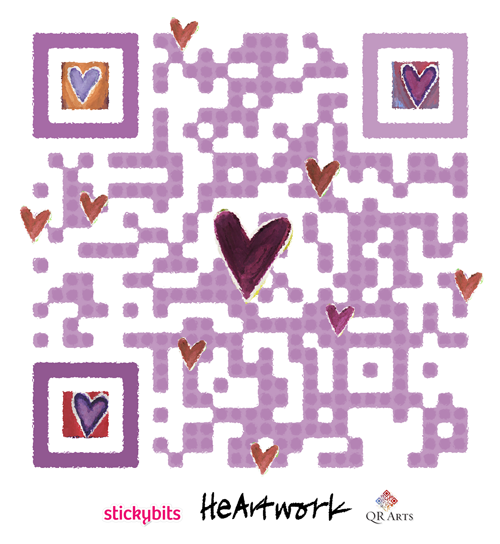
For example, QR Code now comes in more colors than just black and white -- and in designer styles! The symbol at the left is not only attractive, but it will take you directly to the embedded designer's link.
In June of 2011, QR Code had its own art show in northwestern France. (http://2d-code.co.uk/qr-code-art-vannes/). Surprisingly
the symbol to the right does not read, but that certainly doesn't take away from the elegance of the design.

The symbol below with the skate-boarder says, "Theres no pipe like a half pipe."
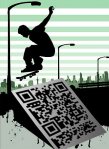
Of all the novel applications for a QR Code symbol, the one below stands out. The Royal Dutch Mint recently produced limited edition coins to commemorate the 100th anniversary of the Mint in Utrecht. Silver coins in 5€ and gold in 10€ were issued in June 2011. On one side of the coin is a QR Code symbol. At the time of this writing, scanning the symbol takes you to: http://www.q5g.nl where you can play a memory game with other Dutch commemorative coins.
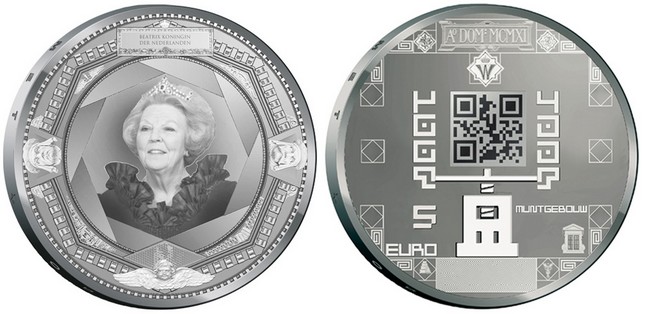
Even more innovative uses for QR Code are limited only by the imagination.
Author
Marsha A. Harmon is Vice President and Chief Operating Officer of Q.E.D. Systems, an organization providing standards development, as well as educational, advisory, and systems design services; focusing primarily on electronic commerce/business technologies, including the disciplines of bar code technology, two-dimensional symbols, wireless communications, sensors and radio-frequency identification.
{jcomments on}
Related articles:
Want to Make Your Own QR Codes? This free tool will do it.
Bar Codes: QR Should Not Mean "Questionable Readability"
Dozens of resource articles and info about 2D codes and QR codes
